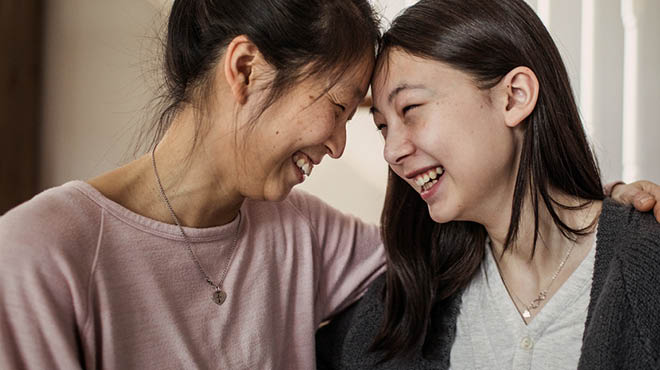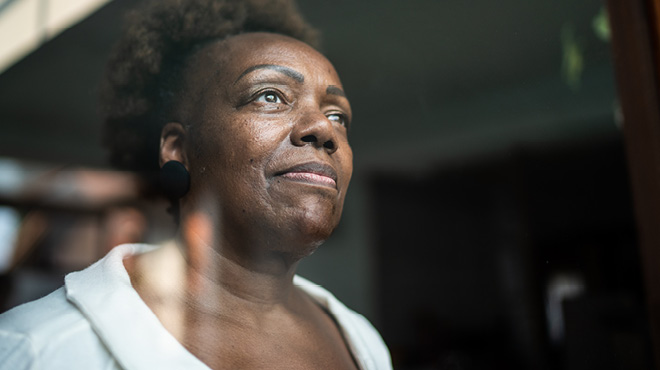Recent Posts
-
 Speaking of HealthUnderstanding autism: The path to diagnosis, awareness and supportApril 24, 2024
Speaking of HealthUnderstanding autism: The path to diagnosis, awareness and supportApril 24, 2024 -

-

Seasonal affective disorder: More than feeling sad

During certain seasons of the year, you may notice changes in your energy level, sleep and interest in activities.
Seasonal affective disorder, or SAD, is a type of depression that is related to the changes in seasons. Symptoms typically appear in the fall, continue through the winter months and eventually go away in the spring or summer.
Affective disorders are mood disorders that have an impactful change in emotions and affect. Affective disorders significantly affect feelings and responses to emotions.
What are the possible causes of SAD?
While the exact cause is unknown, it may be linked to the reduced amount of sunlight affecting the natural chemicals like serotonin and melatonin in your body that determine mood and energy levels and regulate sleep.
SAD is not simply a case of the winter blues, a condition that is more mild and common. SAD symptoms are severe enough to make it difficult to function in social, work and home environments.
How does SAD differ from other types of depression?
SAD has a seasonal pattern, with recurring episodes happening more predictably during certain seasons — most commonly during the winter months. SAD can have a predictable pattern to depression, which is helpful for the management of the disorder.
The criteria for diagnosing SAD are similar to diagnosing major depression, with the seasonal pattern as a key indicator.
Who is most at risk for experiencing symptoms of SAD?
People who live in the northern half of the U.S., where daylight hours are shorter and there is less sunlight, are more at risk for SAD. It's estimated that about 1 in 20 people in the northern half of the U.S. could have symptoms suggestive of SAD.
While a person is not born with SAD, it's believed to run in families. It's more common in women, as are all depressive disorders.
What symptoms indicate seasonal affective disorder?
On average, SAD will last about five months of the year. Typically, symptoms will develop in October and worsen around the end of daylight saving time, followed by a more drastic decline in November. January and February tend to be the months with the most severe symptoms of depression.
Symptoms of seasonal affective disorder to watch for include:
- Difficulty concentrating
- Feeling persistently tired and fatigued, including feeling a loss of energy nearly every day of the affected months
- Feelings of worthlessness
- Losing interest in things you would typically enjoy, such as hobbies and social activities
- Persistently feeling down or sad
- Sleep disturbances, which could include hypersomnia (sleeping too much) or insomnia (difficulty falling asleep)
- Thoughts of suicide
- Weight changes, including weight gain or weight loss
Are there treatments available for SAD?
Light therapy
Bright light therapy is considered an effective treatment for SAD. Research suggests that around half of people who use a bright light therapy box have good results with symptom reduction.
It's essential to meet with a healthcare professional familiar with bright light therapy to determine the type of device needed to be effective, how to correctly set it up and the length of time required in front of a light box.
Generally, the light box should provide an exposure of 10,000 lux of light and emit as little UV light as possible. The typical recommendation is to use the light box within the first hour of waking up in the morning for 20–30 minutes.
Some light boxes emit white light, and others emit blue light. There is no advantage to one color.
Talking with your healthcare team before using a light box is crucial if your skin or eyes are sensitive to light due to a medical condition or medication.
Medications
An antidepressant prescribed by a healthcare professional can be an effective treatment option.
Physical activity
Research has shown that exercising for 20 minutes at least three days a week has similar effectiveness to taking an antidepressant. Being active can help with serotonin production and boost your mood. Exercising outdoors during daylight hours increases the effectiveness of the activity.
Cognitive behavioral therapy (CBT)
CBT is an effective treatment for SAD and clinical depression. CBT helps people learn how to manage their symptoms of depression or reduce the severity of the symptoms. Talk with your primary care provider about CBT and how to find a provider skilled at delivering CBT for depression or anxiety.
Because SAD is tied to the changing seasons, the onset can be predicted, which sets a person up to better manage their symptoms. If you have SAD, there are preventive measures that you can put in place and steps you can begin taking before major depression develops.
Remember these tips:
- Be physically active.
Exercise helps relieve stress and anxiety. It's essential to stay active during winter, even if you are tempted to become less active during colder months. - Get outside.
Spend 15 to 20 minutes outside when the sun is out. If the weather allows, take a walk outside during the lunch hour when the sun is at its peak. Sunlight helps adjust your body's internal clock. - Make your environment bright.
Open the window blinds and allow sunlight into your home. Sit near a window while at home or work. - Prioritize sleep.
Go to bed and wake at the same time every day, with the goal of getting seven to nine hours of restful sleep. Excessive napping and oversleeping beyond your typical schedule can disrupt your circadian rhythm.
- Stay connected to friends and family.
Decreased mood can lead to a behavior of staying home and isolating. Engaging with friends, staying in a routine, and getting active at home and outside of the home are essential. - Take care of your body and mind.
Eat regular, healthy meals. Avoid drugs and alcohol, which can make depression worse. Manage stress with practices like deep breathing, mindfulness and meditation.
If you have a history of SAD, talk with your healthcare team about a plan to better manage your mood during the winter months.
Watch this video to learn more about the type of depression linked to seasonal changes.
Janice Schreier is a clinical therapist in Psychiatry & Psychology in La Crosse, Wisconsin.



